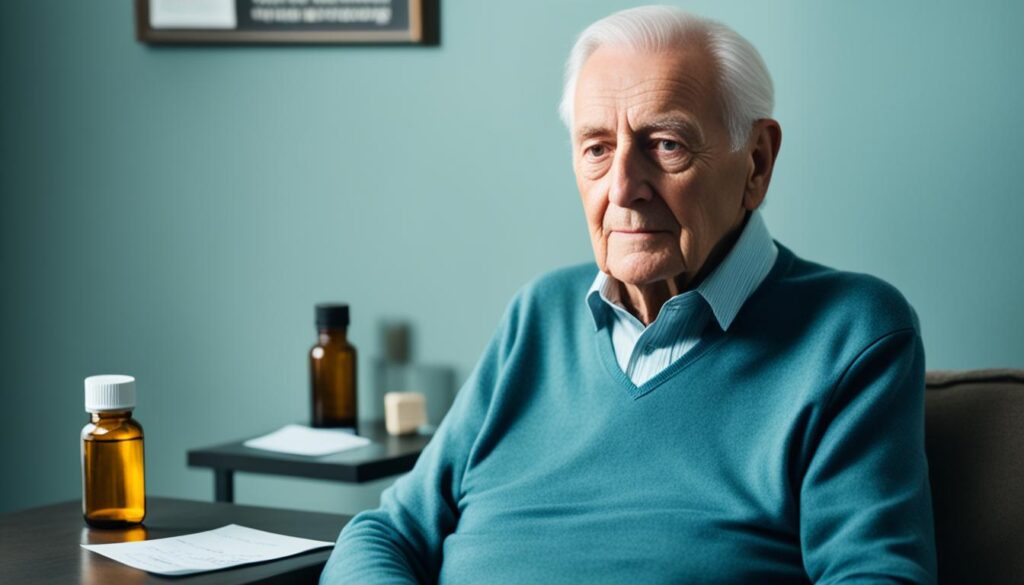End of Life Issues
Does Hospice Cover 24-hour Care at Home: A Comprehensive Guide
Delve into the complex realm of hospice care to uncover the truth about 24-hour home care coverage – the surprising answer awaits.

Thinking about hospice care often sparks questions on whether it can deliver round-the-clock support right at your doorstep. Hospice care aims to bring solace and help during tough times, yet the extent of around-the-clock care available at home might surprise quite a few folks.
Understanding the nuances of hospice care can shed light on the possibilities and limitations of in-home support for patients in need. Let's explore how hospice navigates the delicate balance of meeting patients' needs within the scope of their services.
Key Takeaways
- Continuous home care offers 24-hour daily support during acute symptom management.
- 24-hour hospice care prevents unnecessary hospitalizations, ensuring comfort at home.
- In-home care supplementation reduces family caregivers' daily responsibilities.
- Medicare eligibility for 24-hour care includes coverage for most hospice services.
Levels of Hospice Care
In hospice care, individuals can receive support at various levels, including Routine care, General inpatient care, Respite care, and Continuous home care. Continuous home care is a crucial aspect of hospice, providing 8 to 24 hours of support daily during crises or acute symptom management. This level of care ensures that patients' needs are met round-the-clock, offering comfort and assistance when they need it most. Hospice care is typically prescribed for individuals with a life expectancy of six months or less, aiming to enhance their quality of life during the end-of-life journey.
Continuous home care plays a vital role in addressing the evolving needs of patients as they navigate the challenges of their illness. By offering 24-hour care at home, this level of hospice care not only supports the patient but also provides reassurance to their families. It allows for immediate interventions and personalized attention, tailored to enhance the patient's comfort and well-being during this sensitive time. Through Continuous home care, hospice teams strive to create a peaceful and supportive environment for both the patient and their loved ones.
Need for 24-Hour Hospice Care

Understanding the necessity for continuous 24-hour hospice care at home is crucial in providing comprehensive support for patients with acute symptoms requiring constant monitoring and assistance. When patients face end-of-life symptoms that demand continuous care, 24-hour hospice services become essential.
Hospice professionals, equipped to address complex medical needs, offer around-the-clock support to manage symptoms effectively. Through continuous care services, patients receive not only medical assistance but also the emotional support needed during challenging times.
The goal of 24-hour hospice care at home is to ensure patients can remain in familiar surroundings while receiving comprehensive care and symptom management. This level of care aims to prevent unnecessary hospitalizations by providing adequate support and monitoring throughout the day and night.
In-Home Care Supplementation
When considering comprehensive support for patients receiving hospice care at home, it's important to recognize the valuable role that in-home care services play in supplementing their needs. In-home care services can provide crucial assistance with daily tasks, lifestyle support, and help alleviate caregiver stress for family members. Here are some key points to highlight the significance of in-home care supplementation:
- Enhanced Quality of Life: By assisting with household tasks and daily activities, in-home care professionals contribute to improving the overall quality of life for patients and their families during the end-of-life journey.
- Relief for Family Caregivers: In-home care services allow family caregivers to focus on spending meaningful time with their loved ones, knowing that essential tasks are being taken care of by trained professionals.
- Minimized Daily Responsibilities: Combining hospice and in-home care helps reduce the burden of daily responsibilities on family members, enabling them to better support their loved ones emotionally and mentally.
Limitations of Hospice Care at Home

Acknowledging the challenges faced by families and caregivers in providing round-the-clock care, it becomes evident that hospice care at home has inherent limitations that necessitate further consideration. While hospice organizations strive to offer comprehensive end-of-life care, including physical, emotional, and spiritual support, they can't provide 24-hour care at home for the entire duration due to constraints in resources and staffing.
Patients approaching the end of life may require continuous care in an institutional setting, such as an inpatient hospice facility, where around-the-clock monitoring and assistance can be readily available.
When individuals reach a stage where they need constant supervision that surpasses what can be managed at home, alternative end-of-life care options might be recommended. Providing adequate end-of-life care in a home environment can be overwhelming for families and caregivers, both physically and emotionally. It's crucial to seek guidance and support from healthcare professionals and others who've navigated similar circumstances to understand and address the limitations of hospice care at home effectively.
Medicare Coverage for 24-Hour Care
To access 24-hour hospice care through Medicare, patients must meet specific qualifying conditions. When considering Medicare coverage for 24-hour care, it's essential to understand the following:
- Eligibility Requirements: Patients must be eligible for Medicare Part A and have a certified terminal illness with a life expectancy of six months or less.
- Co-Payments: While Medicare covers most hospice services, patients may still be responsible for small co-payments for prescription drugs and respite care.
- Location of Care: Medicare may cover 24-hour hospice care for patients who are homebound or residing in nursing homes or other care facilities.
Navigating Medicare coverage for 24-hour hospice care can be complex, but it's crucial to ensure that patients receive the support they need during such a challenging time. Understanding the conditions, possible co-payments, and where the care can be provided is key to making informed decisions about hospice care under Medicare.
Frequently Asked Questions
What Is Continuous Home Care Regarding the Hospice Benefit?
Continuous home care in hospice is a vital level of support offering 8 to 24 hours of assistance daily, particularly during acute symptom management like intense pain or breathing issues. This care is covered by Medicare and ensures patients can stay home comfortably, avoiding unnecessary hospital trips.
Nurses provide round-the-clock medical support, focusing on end-of-life symptom management, comfort, and emotional well-being, allowing individuals to receive necessary care in a familiar environment.
What Is Usually Not Included in Hospice Care?
Typically, hospice care doesn't include round-the-clock nursing or continuous monitoring. Instead, it focuses on providing intermittent visits and support for comfort and symptom management.
While hospice offers comprehensive care, it may not provide the constant medical supervision needed for 24-hour care at home. Hospice prioritizes quality of life and comfort measures, which differ from the continuous care required in other settings.
Does Medicare Pay if the Patient Is in Hospice?
Medicare typically covers hospice care for eligible patients. It provides essential support during a challenging time. This coverage extends to various services that aim to enhance comfort and quality of life.
Our team ensures that patients receive the necessary care and attention while respecting their dignity and individual needs. We strive to deliver compassionate care in line with Medicare guidelines to support both patients and their families.
How Many Times a Week Does Hospice Come?
We provide care tailored to the patient's needs, adjusting visits as necessary.
The hospice team typically visits for short durations, less than an hour each time.
For acute situations, we offer continuous care, available 8 to 24 hours a day.
Our goal is to ensure patients receive the right level of support at home.
It's all about meeting individual requirements with compassion and attention to detail.
Conclusion
In conclusion, while hospice care at home can provide invaluable support for patients in their final days, it may not always cover 24-hour care. It's important to consider alternative options like inpatient hospice care for round-the-clock assistance.
Remember, hospice professionals work tirelessly to ensure comfort and dignity for patients, but they can't be everywhere at all times. Let's not forget the incredible dedication and compassion they bring to their work, making a world of difference for those they care for.
End of Life Issues
10 Facts About Physician Assisted Suicide and Rational Suicide

Did you know that suicide constitutes a global emergency, causing 800,000 deaths across the world annually? It is especially significant that older adults account for a substantial number of these suicide deaths, identifying them as one of the most vulnerable populations.
When it comes to end-of-life decisions, the topics of physician assisted suicide and rational suicide are complex and controversial, especially in the context of older adults. The concept of rational suicide raises questions about self-determination, mental competence, and medical ethics. It challenges our understanding of autonomy, ageism, and the role of healthcare professionals in supporting end-of-life choices. In this article, we will delve into the facts and examine different perspectives on physician assisted suicide and rational suicide in older adults.
Key Takeaways:
- Suicide is a global issue, causing 800,000 deaths worldwide each year.
- Older adults are disproportionately affected by suicide.
- Physician assisted suicide and rational suicide are complex and controversial topics.
- The concept of rational suicide challenges our understanding of autonomy and medical ethics.
- We will explore different perspectives on physician assisted suicide and rational suicide in older adults.
Overview of Suicide in Older Adults
Suicide is a global issue, with approximately 800,000 deaths worldwide each year. Older adults are particularly vulnerable to suicide, accounting for a disproportionately high number of suicide deaths. Depression, a prevalent mental health condition, is the most common risk factor associated with late-life suicide. However, it’s important to note that not all older adults who experience depression become suicidal.
In addition to depression, physical illness can also contribute to suicidal behavior among older adults, especially when it leads to functional disabilities. The challenges of aging, such as the loss of independence and a sense of purpose, can further exacerbate feelings of despair. It is crucial to recognize these risk factors and provide appropriate support to older adults at risk of suicide.
“Depression is the most common risk factor associated with late-life suicide.”
By addressing mental health concerns, physical health needs, and existential struggles, we can work towards preventing suicide in this vulnerable population. Promoting awareness, fostering social connections, and ensuring access to quality mental health care are essential components of suicide prevention efforts for older adults.
Prevalence of Suicide in Older Adults
Older adults face unique challenges that can contribute to feelings of despair and increase their risk of suicide. Let’s take a closer look at some key statistics:
| Key Facts | Statistics |
|---|---|
| Total Number of Suicides Worldwide | 800,000 deaths annually |
| Older Adults’ Share of Suicide Deaths | Disproportionately high |
| Common Risk Factor | Depression |
| Contribution of Physical Illness | Increases vulnerability |
These statistics highlight the urgency of addressing suicide among older adults and the need for targeted intervention strategies.
With a comprehensive understanding of the factors contributing to suicide in older adults, we can develop effective prevention efforts and provide the necessary support to promote mental well-being and a sense of purpose in this stage of life.
The Concept of Rational Suicide
Rational suicide is a controversial concept that refers to a well-thought-out decision to die by an individual who is mentally competent. In the case of older adults, this concept becomes even more complex. The definition of rational suicide includes factors such as a realistic assessment of the situation, a conscious disengagement from treatment, communication of the desire to end one’s life, and a triggering event that heightens a hopeless situation. It is important to note that the concept of rational suicide is debated, and some argue that it is difficult to distinguish between rational decision-making and the influence of underlying psychopathology.

While rational suicide is often associated with a well-thought-out decision, the complexities surrounding its definition cannot be ignored. Older adults facing end-of-life challenges may grapple with various factors such as physical decline, loss of independence, and existential despair. These circumstances can significantly influence one’s perception of life’s value and the desire to opt for a rational suicide, making it crucial to explore individual narratives and provide empathetic support.
“The decision to pursue rational suicide requires a conscious evaluation of one’s circumstances as well as an understanding of personal autonomy.”
Understanding the complexities of rational suicide in older adults is essential to provide compassionate care and support. By considering individual perspectives, engaging in open dialogue, and promoting mental health services, we can contribute to a better understanding of this controversial topic.
Rational Suicide in Older Adults: Key Factors to Consider
The decision to pursue rational suicide is influenced by several key factors:
- Realistic Assessment: Older adults must engage in a realistic evaluation of their circumstances, taking into account physical health, emotional well-being, quality of life, and support networks.
- Conscious Disengagement: Individuals contemplating rational suicide may consciously disengage from treatment options, recognizing that available interventions may not significantly improve their condition or overall well-being.
- Communication: Open and honest communication regarding the desire to end one’s life is crucial, as it allows healthcare providers, family members, and friends to engage in meaningful discussions about the individual’s emotional state and concerns.
- Triggering Event: A triggering event, such as the loss of a loved one or a deteriorating medical condition, can intensify feelings of hopelessness and contribute to the desire for a rational suicide.
It is important to approach the discussion of rational suicide with sensitivity and empathy. By acknowledging the complexity of this decision and providing supportive resources, we can ensure that older adults have access to the care and information they need to make well-informed choices.
| Advantages of Understanding Rational Suicide | Disadvantages of Understanding Rational Suicide |
|---|---|
|
|
Ethical Considerations in Rational Suicide
The concept of rational suicide raises important ethical considerations. One key consideration is the respect for patient autonomy – the right of individuals to make decisions about their own lives. We believe that individuals should have the freedom to choose their end-of-life options, including the decision to end their own lives in certain circumstances.
However, the ethical landscape becomes more complex when rational suicide intersects with the broader euthanasia debate. Euthanasia, or physician-assisted death, involves the intentional act of hastening death to relieve suffering. While both rational suicide and euthanasia involve end-of-life choices, they differ in certain aspects.
Rational suicide is a highly personal decision based on an individual’s autonomy and well-thought-out reasoning. It is a choice that arises from personal circumstances and a desire to maintain control over one’s own life, even in the face of suffering. On the other hand, euthanasia involves the involvement of a healthcare professional in actively ending a patient’s life to alleviate their suffering.
In the euthanasia debate, opinions vary widely. Some argue that if suicide can be rational, then the right to die should be legally recognized and regulated. They advocate for legislation that allows individuals who are suffering unbearably to be granted the option of a peaceful death. They believe that providing a legal framework for euthanasia can ensure that the process is carried out ethically and with appropriate safeguards.
However, others have concerns about the potential for abuse and the implications for the broader societal commitment to suicide prevention. They argue that enabling euthanasia could undermine efforts to support people in experiencing a good quality of life until their natural death and may lead to a slippery slope where the criteria for euthanasia become more permissive over time.
In the end, the ethical considerations surrounding rational suicide and the wider euthanasia debate are complex, involving deeply-held values and perspectives. We must carefully balance the principles of patient autonomy and the duty to prevent harm, ensuring that any decisions made in this realm are based on a thorough understanding of both the individual’s situation and the societal implications.
Ethical Considerations in Rational Suicide and Euthanasia
| Consideration | Rational Suicide | Euthanasia |
|---|---|---|
| Patient Autonomy |
|
|
| Harm Prevention |
|
|

Legal Implications of Rational Suicide
In the complex landscape of rational suicide, legal implications vary across different countries and jurisdictions. Let’s take a closer look at the legal framework surrounding this sensitive issue.
The Dutch Perspective
In the Netherlands, euthanasia laws allow physicians to provide assistance in dying, including in the case of rational suicide. However, strict criteria must be met to ensure ethical practice:
- A voluntary and well-considered request
- Unbearable suffering without prospects of improvement
- Consultation with an independent physician
This comprehensive approach aims to safeguard the individual’s autonomy and ensure that decisions regarding end-of-life options are well-informed and carefully considered.
Challenges in Distinguishing Rationality
One of the key legal challenges in the realm of rational suicide is the distinction between rational decision-making and irrational suicidality. Determining the rationality of an individual’s desire to end their life can be subjective and complex. It requires a thorough examination of the decision-making process, mental competence, and the influence of underlying psychopathology.
Informed Consent and Decision-Making
Legal implications also touch on the concept of informed consent in end-of-life decision-making. It is crucial to ensure that individuals fully understand the consequences of their choices, including the option of rational suicide, and have access to comprehensive information about alternative palliative care options.
“The legal landscape surrounding rational suicide is a delicate balance between respecting individual autonomy and preventing unnecessary harm.”
The Tension between Suicide Prevention and the Right to Die
The relationship between suicide prevention efforts and the right to die further muddies the waters of the legal implications. While society is committed to suicide prevention, acknowledging and regulating rational suicide presents a unique ethical challenge. Striking a balance between preventing unnecessary deaths and respecting individual autonomy remains a formidable task for legislators and policymakers.
To gain a deeper understanding of the legal implications of rational suicide, it is essential to consider the broader ethical, societal, and cultural perspectives within each jurisdiction.

| Country | Legal Standpoint |
|---|---|
| Netherlands | Physician-assisted dying is permitted under strict criteria, including rational suicide cases. |
| United States | The legality of assisted suicide varies across states, with Oregon, Washington, Vermont, California, Colorado, Hawaii, Maine, New Jersey, and the District of Columbia having laws allowing some form of physician-assisted death. |
| Canada | Medical assistance in dying is legal under specific conditions, including the presence of a grievous and irremediable medical condition. |
| Switzerland | Switzerland permits assisted suicide when performed by non-physicians, as long as it is not motivated by self-interest. |
It is important to remember that the legal landscape continues to evolve, reflecting societal attitudes, ethical considerations, and the changing needs of individuals facing end-of-life decisions.
The Role of Mental Health Evaluation
Mental health evaluation plays a crucial role in assessing rational suicide. When faced with the complex decision-making process in cases of rational suicide, it is essential to carefully evaluate the individual’s mental state to determine whether their death wish is rational or influenced by underlying psychopathology. This evaluation involves a comprehensive assessment of the individual’s decision-making capacity, cognitive functioning, and psychiatric history.
The involvement of mental health professionals in this process is invaluable as they can provide valuable insights and guidance. By conducting a thorough evaluation, mental health professionals can differentiate between rational decision-making and the impact of mental illness. This distinction is crucial in ensuring that the right course of action is taken to support the individual’s well-being.
Assessing Decision-Making Capacity
Assessing decision-making capacity is a critical component of mental health evaluation in cases of rational suicide. It involves examining the individual’s ability to understand the nature and consequences of their decision, appreciate alternative options, and communicate their choice effectively.
“By conducting a thorough evaluation, mental health professionals can differentiate between rational decision-making and the impact of mental illness.”
During the assessment, mental health professionals may employ various standardized tests and interviews to evaluate decision-making capacity. These assessments consider the individual’s cognitive functioning and their ability to weigh the pros and cons of their decision in a rational manner.
Understanding the Impact of Mental Illness
Mental health evaluation also includes an examination of the individual’s psychiatric history and current mental state. This step is crucial in determining whether the individual’s decision is influenced by underlying mental illness.
A comprehensive assessment of psychiatric history involves reviewing past diagnoses, treatments, and any history of suicidal ideation or attempts. By understanding the individual’s mental health journey, mental health professionals can identify any factors that may contribute to their current decision. Additionally, addressing any untreated or inadequately managed mental health conditions is essential in guiding the individual towards the most appropriate course of action.
Insights and Guidance
The involvement of mental health professionals provides a valuable source of insights and guidance when it comes to assessing rational suicide. They bring expertise in evaluating mental health, assessing decision-making capacity, and navigating complex ethical considerations.
By working collaboratively with the individual, mental health professionals can provide support and resources to facilitate informed decision-making. They ensure that all factors, including mental health, are taken into account when considering the individual’s well-being and the impact of their decision on themselves and their loved ones.

Palliative Care as an Alternative
Palliative care is an essential and compassionate alternative to consider for individuals facing terminal illnesses and navigating the challenges of end-of-life decisions. Rather than opting for rational suicide, palliative care provides a comprehensive approach to relieve suffering, improve quality of life, and offer support to both patients and their families.
At its core, palliative care focuses on addressing the physical, emotional, and spiritual needs of individuals. By doing so, it aims to alleviate pain, distress, and discomfort, allowing patients to experience a sense of dignity and peace as they approach their natural death.
When facing a terminal illness, individuals may feel overwhelmed and helpless. Palliative care provides a supportive framework that empowers them to make decisions about their care, ensuring their autonomy and agency are respected throughout the process. This collaborative approach involves open and honest communication between patients, their families, and healthcare providers, fostering a sense of trust and understanding.
The comprehensive nature of palliative care extends beyond symptom management. It embraces the emotional and psychological well-being of patients, helping them navigate the complex array of emotions that often accompany end-of-life experiences. Palliative care also offers spiritual support, addressing existential concerns and providing solace during this challenging journey.
Palliative care seeks to enhance the quality of life for individuals with terminal illnesses, emphasizing comfort, dignity, and the individual’s unique needs and desires.
It is crucial to consider palliative care as a viable alternative when making end-of-life decisions. By choosing palliative care, individuals can receive specialized support tailored to their specific needs, ensuring their physical, emotional, and spiritual well-being are prioritized. This approach allows patients to live their remaining days with a sense of peace, surrounded by a compassionate and comprehensive care team.

Palliative care plays a vital role in suicide prevention as well. By alleviating pain, addressing emotional needs, and providing holistic support, it helps individuals find hope, purpose, and connection during their final stages of life. This comprehensive care approach acknowledges the value of every life and aims to support patients and their families in navigating the complexities of terminal illness.
In the following table, we highlight the key features of palliative care as a compassionate alternative to rational suicide:
| Benefits of Palliative Care | Empowers individuals to make informed decisions |
|---|---|
| Relieves suffering and improves quality of life | Provides comprehensive physical, emotional, and spiritual support |
| Preserves dignity and respects autonomy | Nurtures hope, purpose, and connection |
| Enhances emotional well-being | Supports patients and families throughout the journey |
The Debate on Rational Suicide in Old Age
The debate surrounding rational suicide in old age is centered on the complex interplay of ageism, well-being, and personal autonomy. While some argue that individuals should have the right to make decisions about their own lives, even in old age, and advocate for the acknowledgment and respect of rational suicide, others express concerns about potential abuse, the slippery slope toward wider acceptance of euthanasia, and the societal commitment to suicide prevention.
There is a diverse range of perspectives on rational suicide in old age, reflecting the intricate nature of ethical, legal, and societal considerations. The topic raises profound questions about the value we place on personal agency, the importance of preserving individual autonomy, and the potential consequences of allowing rational suicide in older adults.
“The debate on rational suicide in old age highlights the tension between individual rights and societal obligations. It challenges us to reconsider the traditional notions of end-of-life decision-making and pushes us to confront our own biases and preconceptions about aging and well-being.”
Ageism is a significant factor in the debate, as it perpetuates stereotypes and prejudices about older adults’ ability to make rational decisions about their own lives. The assumption that old age automatically diminishes an individual’s capacity for rational thought can undermine the principle of autonomy and limit the choices available to older adults.
On the other hand, concerns about potential abuse and the erosion of societal commitment to suicide prevention cannot be ignored. It is essential to carefully consider and balance competing ethical principles, taking into account the potential ramifications of adopting a more permissive stance on rational suicide in old age.
The Importance of Well-being
Central to the debate on rational suicide in old age is the concept of well-being. Advocates argue that individuals should have the right to end their lives if they believe their overall well-being has significantly deteriorated, and their suffering has become unbearable.
However, opponents caution that evaluating well-being is inherently subjective and can be influenced by factors such as mental health, social support, and access to resources. They emphasize the importance of offering alternative avenues for improving well-being, such as comprehensive healthcare, mental health support, and social services, as opposed to endorsing rational suicide as a solution.
A Closer Look at Ageism
Ageism, the discrimination and prejudice against individuals based on their age, plays a significant role in the debate on rational suicide in old age. Ageist attitudes often undermine the dignity and worth of older adults, perpetuating harmful stereotypes and notions of diminished value and purpose in life.
Challenging ageism requires recognizing the inherent worth and agency of older adults, allowing them to make decisions about their own lives, and supporting their well-being in ways that are respectful, inclusive, and free from discriminatory biases.

The Need for Further Research and Dialogue
The debate on rational suicide in old age warrants ongoing research and open, respectful dialogue to explore the complexities and nuances involved. It requires interdisciplinary collaboration, drawing on the insights of medical professionals, ethicists, policymakers, and society as a whole to navigate the ethical, legal, and societal considerations involved.
By engaging in constructive conversations and fostering a deeper understanding of the multiple perspectives and concerns surrounding rational suicide in old age, we can strive towards a more compassionate, inclusive, and informed approach to end-of-life decision-making for older adults.
Perspectives of Psychiatrists on Rational Suicide
When discussing the concept of rational suicide, psychiatrists offer diverse perspectives, particularly concerning individuals with mental illnesses. These professionals play a crucial role in assessing requests for euthanasia and providing care for individuals with mental health conditions. Some psychiatrists believe that suicide stems from underlying psychopathology and argue that individuals with mental illnesses are incapable of making rational decisions about their own lives. On the other hand, there are those who argue that patients with mental disorders can indeed have a rational wish to die, even in cases of severe mental illness such as schizophrenia.
The Link between Mental Illness and Rational Suicide
There is ongoing debate within the psychiatric community about whether individuals with mental illnesses can make rational decisions about ending their lives. Some psychiatrists believe that patients should not be viewed solely as products of their mental disorders and that their desires for rational suicide should be taken seriously. They argue that careful assessment and consideration of the individual’s distress, suffering, and values are vital in determining the rationality of their decision.
Conversely, some psychiatrists maintain that mental illness inherently impairs an individual’s capacity for rational decision-making. They highlight the potential influence of symptoms such as hopelessness, cognitive impairments, and distorted thinking patterns on an individual’s perception of their own situation. These psychiatrists emphasize the importance of treating mental illnesses and providing appropriate care to address underlying psychopathology.
Psychiatrists have varying perspectives on the concept of rational suicide, reflecting the complexities of individual experiences and mental health conditions.
The Role of Psychiatrists in Suicide Prevention
Despite differing viewpoints on rational suicide, psychiatrists are crucial in suicide prevention efforts. Through mental health evaluations and clinical assessments, they help to differentiate between rational decision-making and the impact of mental illness. By identifying and addressing factors contributing to suicidal thoughts, these professionals can provide appropriate interventions, treatment, and support. Psychiatrists play a vital role in guiding individuals towards alternative options and ensuring that necessary care is accessible.
It is important to note that psychiatrists also contribute to ongoing discussions about the legal and ethical dimensions of rational suicide. Their professional expertise and insights inform public policy, legislation, and guidelines surrounding end-of-life care and the right to die.
| Perspectives of Psychiatrists on Rational Suicide | Key Points |
|---|---|
| Psychiatrists’ Views |
|

Perspectives of General Practitioners on Rational Suicide
General practitioners (GPs) play a vital role in the care and support of patients, particularly in the context of end-of-life decisions. When it comes to the delicate topic of rational suicide, GPs hold diverse perspectives shaped by their medical expertise and personal beliefs. While some GPs may feel hesitant to engage in discussions about euthanasia and rational suicide, others recognize the significance of understanding the individual’s narrative and providing holistic care.
The role of GPs extends beyond purely medical interventions. They are uniquely positioned to guide patients and their families through the complex terrain of end-of-life care. By embracing a broad biopsychosocial approach, GPs can help manage distress and offer support that goes beyond physical well-being.
It is essential to consider the perspectives of GPs in the broader discussion on rational suicide. Their insights provide valuable context for understanding the complexities of mental illness, end-of-life care, and the delicate balance between patient autonomy and suicide prevention.
The Complexity of Suicidal Thoughts and Euthanasia Requests
Suicidal thoughts and euthanasia requests are deeply complex and multifaceted, necessitating a comprehensive exploration of the individual’s unique narrative and the broader context of their life. These phenomena cannot be simply categorized as impulsive suicidality, chronic suicidality, or a rational death wish; they demand a nuanced understanding. A multitude of factors contribute to these thoughts and requests, including emotional distress, underlying psychopathology, chronic pain, disability, loss of independence, and concerns about burdening others.
“The complexity of suicidal thoughts and euthanasia requests requires us to go beyond surface-level understanding and truly delve into the intricate layers that shape an individual’s experience.”
In order to comprehensively address these issues, a biopsychosocial approach is crucial. This approach recognizes that suicidality and euthanasia requests are influenced by a combination of physical, psychological, and social factors. It acknowledges the interplay between the individual’s physical health, mental well-being, and social environment. By considering all these dimensions, we gain a deeper understanding of the complexities involved and can provide more effective support and interventions.
The Role of Individual Narratives
Individual narratives play a vital role in understanding and responding to suicidal thoughts and euthanasia requests. These narratives encompass the unique life experiences, struggles, and values of each individual. By actively listening to and valuing their stories, we can gain insight into their perspectives, motivations, and specific needs. This empathetic and person-centered approach allows for more personalized and meaningful support.
Recognizing the diversity of individual narratives helps challenge stigmatizing beliefs and assumptions surrounding suicide and euthanasia. It fosters a greater appreciation for the complex interplay between personal experiences, societal pressures, and cultural influences. By engaging in respectful and non-judgmental conversations, we can create an environment where individuals feel safe to share their thoughts and concerns, facilitating a deeper understanding and more effective care.
Biopsychosocial Approaches to Intervention
Addressing suicidality and euthanasia requests requires a holistic biopsychosocial approach that encompasses the multidimensional aspects of an individual’s life. Within this framework, healthcare professionals collaborate across disciplines to provide integrated support encompassing medical, psychological, and social interventions.
Mental health professionals play a vital role in conducting thorough assessments and providing evidence-based interventions. Their expertise is instrumental in evaluating an individual’s mental health, mitigating psychopathology, and developing appropriate treatment plans. This collaborative effort, involving psychiatrists, psychologists, and counselors, ensures comprehensive care and support.
Additionally, it is crucial to address the physical dimension through effective pain management strategies and medical interventions. Treating underlying physical conditions and managing symptoms not only improves the individual’s quality of life but can also alleviate distress that contributes to suicidal thoughts and euthanasia requests.
Last but not least, social support serves as a critical component of intervention. Strengthening and expanding an individual’s social network, connecting them with support groups or community resources, and fostering meaningful connections all contribute to their overall well-being. By addressing the social factors influencing suicidality and euthanasia requests, we can provide a more comprehensive and effective response.

Approaching the complexity of suicidal thoughts and euthanasia requests requires a deep understanding of individual narratives and a biopsychosocial approach to intervention. By valuing and embracing each person’s unique story and addressing the physical, psychological, and social aspects of their lives, we can provide the support and care necessary to navigate these complex challenges.
Conclusion
The topic of physician assisted suicide and rational suicide is complex and highly debated. When it comes to rational suicide in older adults, there are contrasting positions and inconsistent findings in the literature. While it is crucial to carefully address expressions of suicidal thoughts in older adults, determining the rationality of such thoughts is intricate and subjective. Ethical considerations, legal implications, mental health evaluations, and alternative options like palliative care further complicate the discussion.
The perspectives of psychiatrists and general practitioners play a vital role in providing comprehensive care and support for individuals making end-of-life decisions. It is important to promote well-being, respect individual autonomy, and prevent unnecessary harm while navigating the challenging territory of physician assisted suicide and rational suicide.
Ultimately, the goal is to ensure that individuals receive the care they need, consider all available options, and have access to comprehensive information to make informed decisions about their own lives. Balancing the right to autonomy with societal commitment to suicide prevention is a delicate task, and ongoing discussions and research are necessary to find the most thoughtful and compassionate approach to this complex topic.
FAQ
What is physician assisted suicide?
Physician assisted suicide refers to the act of a physician providing assistance to a patient in ending their own life. This typically involves prescribing medication that the patient can use to bring about their death.
What is rational suicide?
Rational suicide is a concept that refers to a well-thought-out decision to end one’s life by an individual who is mentally competent. It involves factors such as a realistic assessment of the situation, a conscious disengagement from treatment, and a triggering event that heightens a hopeless situation.
What are the ethical considerations in rational suicide?
Ethical considerations in rational suicide include the respect for patient autonomy, the right to make decisions about one’s own life. The debate often intersects with discussions about euthanasia, physician-assisted death, and the right to die. There are differing opinions on this topic, with societal commitment to suicide prevention complicating the discussion.
What are the legal implications of rational suicide?
The legality of rational suicide varies across different countries and jurisdictions. Informed consent and the decision-making process for end-of-life options are factors that come into play. The distinction between rational suicide and irrational suicidality can be challenging, and the relationship between suicide prevention and the right to die further complicates the legal landscape.
What is the role of mental health evaluation in rational suicide?
Mental health evaluation plays a crucial role in assessing rational suicide. It involves the careful evaluation of the individual’s mental state, including an assessment of decision-making capacity, cognitive functioning, and psychiatric history. The involvement of mental health professionals can provide valuable insights and guidance in cases of rational suicide.
What is palliative care and how does it relate to rational suicide?
Palliative care is an alternative to rational suicide for individuals facing terminal illnesses and end-of-life challenges. It focuses on relieving suffering, improving quality of life, and providing support for patients and their families. By addressing physical, emotional, and spiritual needs, palliative care aims to alleviate pain and distress, allowing individuals to live with dignity until their natural death.
What is the debate on rational suicide in old age?
The debate on rational suicide in old age revolves around the intersection of ageism, well-being, and personal autonomy. Some argue that individuals have the right to make decisions about their own lives, even in old age, and that the concept of rational suicide should be acknowledged and respected. Others are concerned about the potential for abuse and the slippery slope towards broader acceptance of euthanasia.
What are the perspectives of psychiatrists on rational suicide?
Psychiatrists have varied perspectives on rational suicide, particularly when it comes to individuals with mental illnesses. Some view suicide as a result of underlying psychopathology and believe that individuals who want to commit suicide are not capable of making rational decisions. Others argue that patients with mental disorders can have a rational wish to die, even in cases of severe mental illness such as schizophrenia.
What are the perspectives of general practitioners on rational suicide?
General practitioners also have diverse perspectives on rational suicide, particularly in the context of end-of-life care. Some may be reluctant to engage in discussions about euthanasia and rational suicide, while others recognize the importance of understanding the individual’s narrative and providing holistic care. GPs play a crucial role in guiding broad approaches to managing distress and supporting patients with end-of-life decisions.
Why are suicidal thoughts and euthanasia requests complex?
Suicidal thoughts and euthanasia requests are complex phenomena that require careful consideration of the individual’s narrative and the broader context of their lives. Factors such as emotional distress, psychopathology, chronic pain, disability, loss of independence, and concerns about burdening others can all contribute to thoughts of suicide and requests for euthanasia. A comprehensive biopsychosocial approach is crucial in understanding and addressing these complex issues.
End of Life Issues
What Does Hospice Do to Provide Comfort in End-of-Life Care?
Step into the world of hospice care and discover the myriad services and support that offer solace during life's most challenging moments.

In the realm of managing end-of-life scenarios, a common saying goes, ‘It takes a village.’ This idea is particularly true in the context of hospice care, where a diverse team of experts comes together to offer support and comfort during a critical time.
But have you ever wondered about the specific tasks and services that this specialized care provides? Let's explore the intricate web of services and support that hospice care encompasses, shedding light on the profound impact it has on individuals and their loved ones during a challenging period.
Key Takeaways
- Hospice provides essential medical, emotional, and spiritual care services.
- Hospice teams offer tailored support for pain management and emotional needs.
- Hospice services are available in diverse settings for patient comfort.
- Hospice emphasizes open communication, family involvement, and financial coverage options.
Services Provided by Hospice
At hospice, we offer a range of essential services to support individuals with terminal illnesses, providing medical care, nursing care, counseling support, and spiritual care with compassion and understanding. Our hospice services encompass a holistic approach to care, ensuring that individuals receive the support they need during this challenging time.
Medical care at hospice includes the provision of medications, medical equipment, and supplies necessary for the management of the terminal illness. Our nursing care team works diligently to monitor symptoms, provide comfort, and coordinate care with other healthcare providers to ensure comprehensive support for our patients. Counseling support is also a vital aspect of our services, offering emotional guidance and assistance to patients and their families as they navigate this difficult journey.
In addition to medical and nursing care, our hospice provides spiritual care, therapy services, dietary counseling, and respite care. These services aim to address the physical, emotional, and spiritual needs of individuals facing terminal illnesses, promoting comfort and quality of life throughout their journey.
Role of Hospice Care Team

As part of the hospice care team, we come together to provide comprehensive support to individuals with terminal illnesses, focusing on managing pain, addressing emotional needs, and offering specialized services tailored to each patient's unique requirements. Our interdisciplinary team is dedicated to ensuring that every aspect of a patient's well-being is taken into consideration during their end-of-life journey.
- Holistic Care Approach: We collaborate as a team to address not only the physical symptoms but also the emotional and spiritual needs of the patients. This holistic approach ensures that individuals receive comprehensive care that supports their overall well-being.
- Grief Support Services: Our team offers grief support to the loved ones of patients, aiding them in navigating the complex emotions that arise during the loss and bereavement process. We're here to provide comfort and guidance during this challenging time.
- Specialized Services: In addition to pain management and emotional support, our team includes specialists such as hospice aides, therapists, and trained volunteers who offer a range of services tailored to meet the unique needs of each individual under our care.
Locations for Hospice Services
In our provision of hospice services, we prioritize creating environments that foster comfort and familiarity for patients facing end-of-life journeys. Hospice care can be provided in various settings, including homes, nursing homes, assisted-living facilities, in-patient facilities, group homes, and hospitals. These diverse locations ensure that individuals can receive compassionate care tailored to their needs and preferences.
Whether a patient chooses to stay in the familiarity of their own home or receive care in a specialized facility, the goal remains the same: to enhance their quality of life and provide comfort during this challenging time.
Our hospice teams are adept at delivering comprehensive support in different environments, guaranteeing that patients and their families receive the necessary assistance and emotional guidance. By offering hospice services in multiple locations, we aim to ensure that individuals have access to the care they require while being surrounded by the comforts and familiarity they cherish.
Communication With Family Members

How can hospice facilitate meaningful and compassionate communication with family members during this challenging time?
As part of the care team, we prioritize open and honest discussions to ensure that family members are well-informed and supported throughout the end-of-life care journey. Here are three ways hospice fosters effective communication:
- Providing Regular Updates: Family members are kept informed about the patient's condition, treatment plan, and decisions regarding end-of-life care. This transparency helps them understand what to expect and how to best support their loved one.
- Offering Guidance and Support: Hospice assists families in navigating difficult conversations by offering resources, guidance, and emotional support. Coping with a loved one's terminal illness can be overwhelming, and having access to these tools can help alleviate some of the burden.
- Including Families in Decision-Making: We ensure that family members are involved in decision-making processes, empowering them to participate in creating a care plan that aligns with their loved one's wishes. This involvement helps families feel supported and valued during this challenging time.
Financial Aspects of Hospice Care
Navigating the emotional landscape of end-of-life care can be overwhelming for families, and understanding the financial aspects of hospice care can provide much-needed reassurance during this challenging time.
Hospice care is typically covered by Medicare, Medicaid, and most private insurance providers, ensuring that patients have access to the necessary services without high out-of-pocket costs. Medicare, for instance, covers all hospice services related to the terminal illness, relieving patients of financial burdens during this sensitive period.
While Medicaid benefits for hospice care vary by state, most states offer coverage for these essential services. Veterans can also access hospice care through the Veterans Affairs (VA) system, which provides comprehensive end-of-life support.
Frequently Asked Questions
What Happens When Someone Is in Hospice?
When someone is in hospice, our focus shifts to providing comfort, dignity, and quality of life in the final stages of a terminal illness. Patients receive symptom management, pain relief, and emotional support from our team of healthcare professionals.
We ensure that their wishes and goals are respected and honored throughout their end-of-life journey. Family members and caregivers also receive support, assistance, education, and bereavement services as we strive to provide personalized and compassionate care.
What Does It Mean When a Person Is Put on Hospice?
When someone is put on hospice, it means they have a life expectancy of 6 months or less. This shift focuses on comfort and quality of life, rather than curative treatments.
Hospice care aims to manage symptoms, offer emotional support, and enhance well-being. Patients on hospice receive specialized care from a healthcare team, providing services at home, nursing homes, hospitals, or hospice centers.
It's about ensuring comfort and dignity during a difficult time.
What Are 3 Disadvantages of Hospice?
We understand that choosing hospice care can be a difficult decision. Some challenges patients may face include limitations on curative treatments, emotional distress due to end-of-life discussions, and feelings of isolation during comfort-focused care.
It's crucial to provide support and understanding during this time. Our compassionate team acknowledges these disadvantages and works to address them with empathy and care.
Let's navigate these challenges together to ensure comfort and peace for all involved.
What Are the Four Stages of Hospice?
The four stages of hospice care are essential for meeting varying needs. Routine home care offers regular visits, while continuous home care provides intensive support during crises.
General inpatient care is crucial for complex symptom management, and respite care gives caregivers temporary relief. Each stage focuses on enhancing comfort and quality of life for patients and their families.
These stages represent our commitment to compassionate care tailored to individual needs.
Conclusion
As we journey through life, hospice acts as a guiding light, offering comfort, support, and compassion during our final moments.
Like a gentle breeze on a warm summer day, hospice care provides a sense of peace and solace to both individuals facing the end of life and their loved ones.
Let hospice be the soothing melody that accompanies you on this difficult but important path.
End of Life Issues
What Does Hospice Only at End of Life Mean?
Bust the myth: Hospice care offers more than just end-of-life support, discover its untold chapters within.

Digging into hospice care is like peeling an onion – there’s way more beneath the surface than you’d think at first glance.
Many assume hospice is solely for the final moments, but let's consider this: what if hospice could offer support and comfort much earlier in the journey of a terminal illness?
The notion that hospice care is only about end-of-life is a myth worth unraveling.
Let's explore the broader landscape of hospice care and discover its role beyond just the last chapter.
Key Takeaways
- Hospice care available for terminal patients with a prognosis of six months.
- Emphasizes dignity, comfort, and peace in end-of-life journey.
- Focuses on palliative treatments for improved quality of life.
- Provides comprehensive support for patients and families.
Common Misconceptions About Hospice Care
Dispelling misconceptions about hospice care is crucial in promoting understanding and compassion for individuals facing terminal illnesses. When it comes to hospice care, there's a common belief that it's exclusively reserved for patients in their final days. However, the reality is that hospice care is available for individuals with a prognosis of six months or less, aiming to enhance their quality of life through comfort and support rather than hastening death. It's essential to recognize that patients can receive hospice care for as long as necessary, and some may even improve and no longer require these services.
Additionally, hospice care not only benefits the patients but also extends its compassionate support to their families. By providing emotional, spiritual, and practical assistance, hospice care ensures that both patients and their loved ones are supported during this challenging time. This holistic approach emphasizes dignity, comfort, and peace, debunking the misconception that hospice care is solely for the very end of life. Through advance care planning and tailored support, hospice care seeks to alleviate suffering and promote a sense of well-being for terminally ill patients and their families.
Benefits of Hospice Care

In hospice care, patients and their families receive comprehensive support to enhance quality of life and navigate end-of-life challenges with dignity and peace. Hospice care benefits include:
- Improved Quality of Life: Hospice care focuses on palliative rather than curative treatments, prioritizing symptom management and comfort to ensure patients live their remaining months with as much ease as possible.
- Enhanced Comfort and Symptom Management: Patients under hospice care often experience improved comfort levels and better symptom control, which can lead to a more peaceful and dignified end-of-life journey.
- Comprehensive Support for Patients and Families: Hospice care provides a holistic approach, offering medical, emotional, and spiritual support not only to the patient but also to their family members, helping everyone involved navigate this challenging time with compassion and understanding.
Eligibility Criteria for Hospice
When considering hospice care, it is essential to understand the specific eligibility criteria that determine if a patient qualifies for this supportive end-of-life service. Hospice and Palliative Care focus on providing comfort, symptom management, and emotional support to individuals with a prognosis of six months or less due to a terminal illness. The eligibility criteria for hospice are not solely based on a life-limiting condition but on a doctor's prognosis of a terminal illness. Patients experiencing frequent hospitalizations, declining functional abilities, and weight loss may meet the criteria for hospice care. The primary goal of hospice is to enhance the quality of life for both the patient and their family during the end-of-life journey. Below is a table summarizing key points regarding eligibility criteria for hospice:
| Eligibility Criteria for Hospice | Details |
|---|---|
| Prognosis | Six months or less due to a terminal illness |
| Doctor's Prognosis | Determines eligibility, not just condition |
| Symptoms Management | Focus on comfort and symptom control |
| End-of-Life Journey | Support for the patient and their family |
| Quality of Life | Enhancing the overall quality of life |
Role of Hospice Care in Different Illness Stages

As we explore the role of hospice care in different stages of illness, it becomes evident that this supportive service extends beyond just end-of-life care, providing valuable comfort and holistic support throughout various phases of a patient's medical journey.
- Patients: Hospice care is available for individuals facing a prognosis of six months or less to live, ensuring they receive specialized care tailored to their unique needs.
- Quality of Life: Hospice care focuses on enhancing the quality of life by prioritizing comfort, symptom management, and emotional support.
- Holistic Support: By addressing not only the physical symptoms but also the emotional, social, and spiritual aspects of care, hospice services aim to improve the overall well-being of patients and their families.
Through a comprehensive approach that considers the individual needs of each patient, hospice care plays a crucial role in supporting individuals with life-limiting illnesses at various stages, promoting comfort, dignity, and quality of life.
Family Support in Hospice Care
With hospice care, families facing the challenges of caring for terminally ill loved ones find compassionate support and practical assistance readily available. Hospice workers offer around-the-clock assistance, ensuring families receive the help they need with personal care duties and emotional support. Nurses conduct home visits, providing continuous support and reducing the stress of frequent doctor visits. This level of care not only eases the burden on families but also offers financial relief compared to hospital stays or emergency room visits.
In addition to meeting physical needs, hospice services extend to emotional support and bereavement therapy. Families are guided through the end-of-life process, receiving the necessary tools to cope with their grief and navigate this difficult time. By offering a holistic approach to care, hospice services not only focus on the terminally ill patient but also prioritize the well-being of the entire family unit, ensuring everyone receives the support they need during this challenging period.
Frequently Asked Questions
What Is the Difference Between Hospice and Palliative Care?
When we consider the difference between hospice and palliative care, it's essential to understand that hospice care is specifically for those with a prognosis of six months or less to live, focusing on comfort rather than curative treatments.
On the other hand, palliative care aims to improve the quality of life for individuals with serious illnesses, regardless of their prognosis, and can be provided alongside curative treatments.
Both involve a multidisciplinary team addressing various needs.
Does Hospice Always Mean End of Life Care?
Absolutely, hospice care doesn't always signify the end of life. Patients can receive support to improve their health while benefiting from comfort and quality of life enhancements. Transitions in and out of hospice care are based on evolving medical needs.
This holistic approach, addressing physical, emotional, and spiritual needs, can stabilize conditions and potentially extend survival. Hospice is about compassionate care, regardless of the prognosis, offering comfort and support throughout the journey.
Can a Person Be on Hospice for Years?
Absolutely, a person can be on hospice for years. In cases where the prognosis extends beyond six months, ongoing hospice care is provided to ensure comfort and support. Our team regularly reassesses eligibility, tailoring care to meet evolving needs.
Long-term hospice care focuses on enhancing quality of life, regardless of the duration of support needed. We're here to offer compassionate care and assistance every step of the way.
Can You Get Hospice Without Being Terminally Ill?
Yes, you can access hospice care without being terminally ill if you meet the criteria for needing end-of-life support. Hospice focuses on providing comfort, symptom management, and support for patients and families facing serious illnesses that require specialized care.
Eligibility is based on the need for end-of-life support, not just being terminally ill. Our team is here to provide compassionate care and assistance during difficult times.
Conclusion
In our experience, hospice care isn't only for end-of-life situations. It's like planting a seed of comfort and support early on, nurturing it as it grows into a beautiful garden of peace and dignity.
By embracing hospice care sooner, we can cultivate a deeper sense of well-being and connection, allowing us to bloom fully in the face of terminal illness.
Let's sow the seeds of hospice care early, and watch as they blossom into moments of grace and love.
-

 Dementia Care2 weeks ago
Dementia Care2 weeks agoHow Gabapentin Affects Dementia: A Comprehensive Guide
-

 Dementia Care2 months ago
Dementia Care2 months agoUnderstanding the Stages of Vascular Dementia: A Visual Chart Guide
-

 Dementia Care2 weeks ago
Dementia Care2 weeks ago5 Things You Need to Know About Jack Nicholson’s Dementia
-

 Medication Management1 month ago
Medication Management1 month agoGabapentin Side Effects: Memory Loss Concerns?
-

 Dementia Care2 months ago
Dementia Care2 months agoUnderstanding Narcissism and Dementia: A How-To Guide
-

 Palliative Care for Parkinson's2 weeks ago
Palliative Care for Parkinson's2 weeks agoPalliative Care for Parkinson’s: A New Hope for Patients”
-

 Dementia Care2 weeks ago
Dementia Care2 weeks ago10 Engaging Dementia Games for Cognitive Stimulation
-

 Dementia Care2 months ago
Dementia Care2 months agoHow to Deal with a Parent’s Dementia: A Practical Guide

















